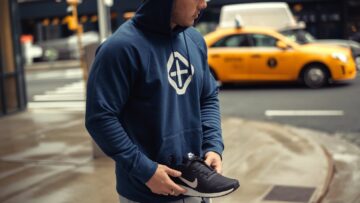
1930s Men’s Fashion: Elegance and Practicality in the Great Depression Era
The 1930s were defined by the challenges of the Great Depression, yet men’s fashion flourished with a focus on elegance, practicality, and timeless sophistication. This era saw the return of structured tailoring and classic accessories, creating a polished aesthetic that remains influential today.
Key Takeaways
- 1930s men’s fashion balanced elegance with practicality.
- Structured suits, fedoras, and wingtip shoes were signature pieces.
- The decade was characterized by refined tailoring and attention to detail.
Essential Elements of 1930s Men’s Fashion
Suits
Single-Breasted Suits: These featured a slim, tailored fit with wide lapels and padded shoulders, typically crafted in dark, muted colors such as navy, charcoal, and brown.
Double-Breasted Suits: A more formal option, these suits offered a broader silhouette and were defined by peak lapels and a sharp, commanding appearance.
Shirts and Ties
Dress Shirts: Crisp white shirts with pointed collars were a wardrobe staple, often paired with ties displaying bold geometric patterns or stripes.
Ties: Narrower than in previous decades, ties added personality to outfits and were commonly accessorized with tie clips for a polished touch.
Trousers
High-Waisted Trousers: These trousers featured pleats and cuffs, offering a comfortable yet stylish fit. Their high waist emphasized the clean, structured lines of the era’s suits.
Footwear
Wingtip Shoes: Known for their decorative perforations, these shoes were versatile and appropriate for both formal and casual settings.
Oxford Shoes: These remained a preferred choice for formal occasions, offering timeless elegance.
Accessories
Fedora Hats: The fedora was a defining accessory of the 1930s, adding a sophisticated and polished edge to any outfit.
Pocket Squares: These added a pop of color and refinement, often folded neatly into the breast pocket of a suit jacket.
Outerwear
Trench Coats: Combining style and practicality, trench coats were a popular choice for inclement weather.
Overcoats: Long, tailored overcoats made from wool or cashmere were essential during colder months, providing warmth and elegance.
Comparison: Early vs. Late 1930s Fashion
| Feature | Early 1930s Fashion | Late 1930s Fashion |
|---|---|---|
| Silhouette | Slim, tailored fit | Slightly more relaxed fit |
| Materials | Heavy fabrics like wool and tweed | Introduction of lighter, more durable fabrics |
| Formality | Highly formal | Slightly less formal, more practical |
Pros and Cons of 1930s Men’s Fashion
| Pros | Cons |
|---|---|
| Timeless elegance and sophistication | High maintenance and cost for quality pieces |
| Versatile pieces suitable for many occasions | Less comfort compared to modern casual wear |
| Strong emphasis on personal style | Requires careful coordination of outfits |
Tips for Embracing 1930s Style Today
Invest in Tailored Suits
Tailored suits with padded shoulders and a structured fit are essential for achieving the sharp, sophisticated look of the 1930s. Opt for high-quality materials to ensure durability and authenticity.
Add Elegant Accessories
Incorporate classic accessories such as fedoras, pocket squares, and wingtip shoes. These details bring a touch of 1930s refinement to modern wardrobes.
Mix Vintage with Modern
Blend elements of 1930s men’s fashion, such as double-breasted blazers or high-waisted trousers, with contemporary clothing to create a unique and stylish look that honors the era while staying relevant.
Recommended Brands for Vintage Styles
- Brooks Brothers: Known for classic tailoring and premium-quality suits, perfect for replicating the 1930s aesthetic.
- Allen Edmonds: Offers stylish and durable footwear, including wingtips and Oxfords reminiscent of the era.
- Goorin Bros.: Specializes in timeless hats, including fedoras, that capture the sophistication of 1930s men’s fashion.
Final Thoughts
The 1930s represent an era of elegance and practicality in men’s fashion. Structured suits, timeless accessories, and refined outerwear define this decade’s enduring style. Incorporating elements of 1930s men’s fashion into modern wardrobes allows men to embrace the sophistication of the past while creating looks that remain stylish and relevant today.






